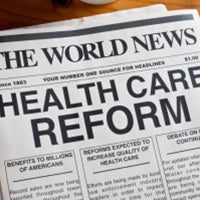IRS Posts Health Insurance Premium Tax Credit Guidance – ThinkAdvisor

What You Need to Know
Tax credit subsidy recipients who earn more than they predict normally have to repay some or all of the excess subsidies.
The new answers include updates of answers about eligibility, reporting and excess subsidy clawbacks.
The IRS has also added eight answers about the tax credit program and unemployment benefits.
The Internal Revenue Service is trying to help Affordable Care Act exchange plan users understand what the COVID-19 pandemic did to their income taxes.
More than 80% of exchange plan enrollees use ACA premium tax credit subsidies to pay at least part of their premiums.
To make sure that patients would have the means to pay for COVID-19 care, Congress made temporary changes in the premium tax credit program rules.
Now, the IRS has answered frequently asked questions, or FAQs, about the changes in a new batch of informal guidance, Fact Sheet 2022-13.
The Rule Changes
The ACA exchange plan program came to life in late 2013. It gives consumers a way to use federal premium tax credits to buy individual major medical coverage from private insurers.
The list of big providers of exchange plan coverage includes Centene, Molina, Anthem and many single-state Blue Cross Blue Shield carriers.
From Jan. 1, 2014 — when the first exchange plan coverage sold took effect — till Congress passed temporary COVID-19 emergency legislation — the tax credit program provided help only for people in families with income over 133% of the federal poverty limit and under 400% of the federal poverty level.
In 2022, in most of the United States, 400% of the federal poverty level is $51,520 for an individual and $106,000 for a family of four.
The new temporary COVID-19 emergency rules have made affordability calculations more generous, increased the size of the premium subsidies, and removed the 400% of federal poverty level eligibility cap. If calculations show that an exchange plan would cost too much to be affordable for an individual with income at 800% of the federal poverty level, that person could qualify for some premium subsidy help.
Congress also provided generous ACA premium tax credit subsidies for unemployed people, and it changed the law excess tax credit subsidy clawback rules.
Most tax credit users qualify for the subsidy by providing income estimates for the coming year. The recipients get the tax credit money in advance, while the tax year is still underway, and use the money to reduce what they pay out of pocket for health insurance premiums. For many users, cash payments for coverage are less than $50 per month.



